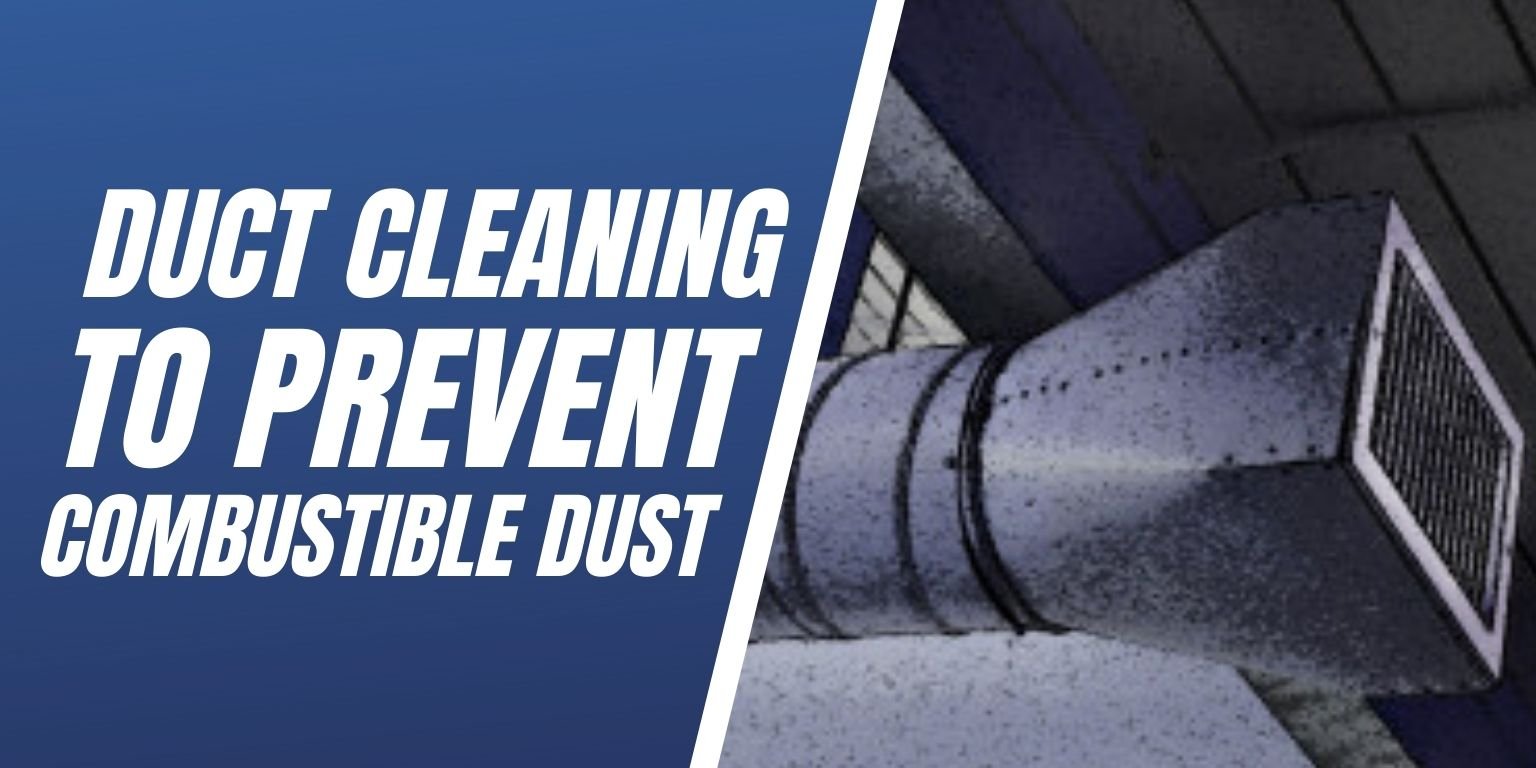
Combustible dust collected in visible areas or accumulating on high surfaces is a well-known source of industrial fires and explosions. However, when thinking about how to prevent combustible dust fire hazards, duct cleaning is probably not the first thing you would think about. Not to mention, ducts are typically hidden above the ceiling, so they are always out of sight. But there is more than just ducts above a facility’s ceiling. There are mechanical systems, structural elements, wires and anything else that would be hidden above the ceiling. And with work from insulation, and construction, dust can easily build up quick.
Dust can stay in the air for days, depending on its size, and over time will be brought into the ventilation ductwork as air flows through the building. The dust will begin to settle in sections of the ventilation where there is anything that might begin to snag the dust flowing past. This can lead to significant accumulations of potentially explosive dust, even if the rest of the building appears clean and safe. In fact, one of the essential parts to creating the situation for a combustible dust explosion is containment. And what better environment for this to happen than inside of a facility’s ventilation system.
Accumulated dust can pose as a fire hazard. Dust is flammable and a fire can start from a spark of energy, or an extremely hot surface. The more dust builds up there is, the more chances there are for a fire to happen. According to NFPA 654, cleaning is needed immediately “whenever a dust layer of 1/32- inch thickness accumulates over a surface area of at least 5% of the floor area of the facility or any given room.” The same rule applies when it comes to cleaning a facility’s ductwork.
Why Commercial Duct Cleaning Is Important to Prevent Combustible Dust Hazards
You would think since the ducts are covered; they would be safe from an ignition source. But in fact, the flowing air actually causes potential ignition sources to be drawn into the ductwork. Sparks and embers can stay hot for a long time. And once sucked into the HVAC system, they can come into contact with dust, or a piece of metal traveling through the ductwork. This will create an ignition spark. The dust moving through the ventilation also creates a buildup of static electricity, which can have the potential to create an explosion. The pressure builds with the initial explosion, and the confinement forces the flames to travel down the ductwork, consuming the collected dust along the way. It acts much like the barrel of a gun or cannon, and builds up immense pressure until it hits something that blocks it, where it then exerts the pressure to force through the weakest point. This is where the explosion becomes dangerous to employees, because the force of these dust explosions can blow entire roofs off buildings, buckle concrete floors, or throw heavy machinery through a building.
There are many benefits to performing regular commercial HVAC systems cleaning services, especially in an industry that produces a lot of dust. We can’t stress enough the importance of making sure your facility’s commercial HVAC system is cleaned and free of any combustible dust accumulations. Not only do clean HVAC systems prove fresh clean air for everyone to breath, but they also help companies save money by running more efficiently. Here are several reasons why your facility can benefit from commercial HVAC systems cleaning service:
- Help control fungal, bacterial and insect growth of contaminates
- Prevent fire hazards to make sure your systems run efficiently
- Prevent quality control issues with routine maintenance
- Prevent loss of energy required from most industrial facilities
- Removal of all debris, dirt, dust, or sludge that cause blockages or potential health concerns
Looking for duct cleaning to prevent combustible dust? Contact Us Here, or call us at 888-845-3952 to learn how we can help you avoid fire & explosion hazards in the workplace.

